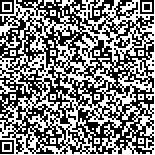| 摘要: |
| 针对山区劳动力数量短缺、农业活动收益低下等问题,文章选择位于重庆“一圈两翼”交汇的地方武隆县,并以该县2个镇4个村部分村民为调查对象,调查统计有关农业劳动力以及农业收益等微观数据。首先利用因子分析方法将所选取指标提取为4个主因子,在4个主因子与年人均纯收入之间建立多元线性回归模型,研究山区农业活动收入影响因素。研究发现:主因子F1(经济作物所占比例、单位面积化肥使用量、政府补贴、培训比例、文化程度、银行是否贷款)、F3(灌溉比例、粮食单产、农作物的收购价格)、F4(务农比例、养殖业净收入)对农业收益有正向作用,且F1、F3、F4与年人均纯收入比分别为1:2.162、1: 0.982、1:0.341,其中主因子F1的正向相关性最大,F3次之,F4最小; F2(耕地总面积、务工纯收入、非农比例)主因子与农业收益呈负相关,与年人均收入比为1:-0.769。研究结果解释了当地农业收益的影响因素及其关联程度,并且提出了进一步加大种植业与养殖业投入(加强农业专业合作社的建设,扩大种植、养殖大户的经营规模)、扩大经济作物种植面积、提高灌溉比例、增强有关惠农政策的宣传以及增大政府对农业的补贴、提高农作物的收购价格、提高农业劳动力文化程度及培训比例、在保证耕地面积不被边际化的同时,扩大农业机械设备的使用范围、合理使用化肥以提高单位面积粮食产量进而实现增加农民农业收益。 |
| 关键词: 农业收入 因子分析 多元线性回归模型 粮食单产 山区 |
| DOI:10.7621/cjarrp.1005-9121.20160512 |
| 分类号: |
| 基金项目: |
|
| THE FACTORS INFLUENCING AGRICULTURAL INCOME IN THE MOUNTAINOUS AREA——A CASE STUDY OF FOUR VILLAGES IN WULONG COUNTY,CHONGQING |
|
Cao Fei1, Shao Jingan2,3, Deng Hua4, Wang jinliang4, Tan Shaojun1
|
|
1.Geography and Tourism Department,Chongqing Normal University,Chongqing 400047,China;2.1.Geography and Tourism Department,Chongqing Normal University,Chongqing 400047,China;3.2.Key Laboratory of Surface Process and Environment Remote Sensing,in the Three Gorges Reservoir Area,Chongqing 400047,China;4.Resources and Environment Department,Southwest University 400716,China
|
| Abstract: |
| Aiming at the problems such as the shortage of labor force and low income in agricultural activities whichcaused some negative impacts on the development of agriculture in mountainous regions, this paper, taking Wulong as an example, analyzed the factors influencing farmers′incomein the "one circle and two wings" area of Chongqing. A partial number of farmers from the four special villages wasinvestigated to collectthe micro data about the productivity rate of agricultural labor force and agricultural income standard of the local villagers. The factor analysis method and multiple linear regression model were used in this paper. The results showed that the main factors, i.e., F1 (the proportion of commercial crops, using of fertilizer per unit area, government subsidies, training scale, degree of education and bank loans), F3 (irrigation ratio, grain yield, and the purchase price of crops) as well as F4 (the proportion of farming and net income of breeding industry) had positive effects on the increase of agricultural income, and the ratios between three main factors F1, F3, F4 and the annual per capital income were 1:113.2, 1:19.6, 1:74.8, respectively. Among them, F1 had the most significant positive correlation, followed by F3and F4; The extracted variables of F2 (total land area, working net income, the proportion of non-farm labor force) was negatively related to the agricultural income, and the ratio between it and the annual per capita income is 1:-81.5.And then, this paper put forward the corresponding recommendations and suggestions to increase the investment and research in agriculture and aquaculture, such as strengthening the construction of agricultural cooperation and expanding the scale of planting and breeding), to increase the area of commercial crops andirrigation proportion, to strengthen the propaganda and implementation of the country′s policies as well as the government′s subsidies, to improve the acquisition price of crops, to enhance the educational degree of the agricultural labor force and the proportion of training, to expand theusing scope of the agricultural machinery and equipment, and toimprove the grain output of per unit and take the farmer′s interests into consideration. |
| Key words: agricultural income factor analysis multiple linear regression model grain yield per unit area mountainousarea |

